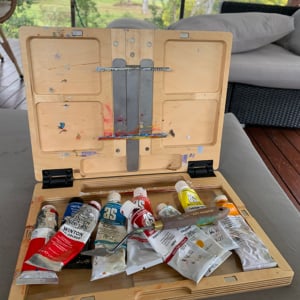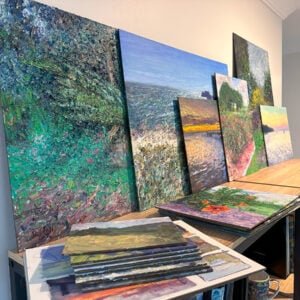
It is no secret that impressionism is my favorite style of painting.
To me, it is the perfect blend of detail and simplicity.
There is enough detail to know what is going on. In fact, from a distance, the great impressionist paintings appear incredibly realistic.
But there is not so much detail that nothing is left to the imagination.
The imagination is a powerful force. It is that x-factor in a painting that allows two people to look at a painting and see two completely different scenes.
But impressionism garnered some harsh criticism in the past, especially from the realists. This brings me to the topic of this post.
Is impressionism just an excuse to be lazy, or for those people who are not skilled enough for true realism?
I do not think so, but I agree the label impressionism can be used to mask shortfalls in skill.
There is a huge difference between amateur and master impressionist paintings.
In fact, many of the great impressionists are also capable of being great realists. Just like the great abstract artist Pablo Picasso was a skilled traditional artist.
Style does not necessarily reflect one’s skill. It is much more a reflection of personality.
An impressionist painting can be judged in the same way you judge a realist painting.
Are the values correct?
Is the perspective accurate?
Is the composition interesting?
Are the colors balanced?
… and so on.
A good test to see if your impressionist painting is on track is to squint at it and observe how accurately your painting reflects your scene.
If it looks generally accurate whilst squinting, then you have probably done a good job. If it does not look accurate, then it most likely means something is wrong with the fundamentals of your painting (such as the values, shapes and colors).
Squinting takes away all the ‘noise’ in your painting and allows you to focus on the more important details. A great impressionist painting may be lacking in refined detail, but not in the fundamental building blocks which make up a great painting.
When I started painting, I would use the impressionist label to mask shortfalls in my own abilities. Rather than recognizing errors in my paintings, I would consider any inaccuracies to just be part of the impressionist style. But in truth, my values, shapes and colors were not correct.
I would have improved much faster had I not worry about trying to paint a particular style and focused on just painting well.
How do you paint well in a world where art can hardly even be defined anymore? Well I like to keep it simple and look towards artists much more skilled than myself and see how they judge their own works. Usually, these skilled artists will judge their paintings on how well they balance value, color, shape and the other elements of art.
So that is how I paint. I do not try and paint a particular style just because I like that style. I just try and paint well.
Of course, I am inspired by all kinds of amazing artists so my style ends up being pulled in a certain direction regardless, however I am not forcing it.
Once you can paint well, then you can start to try and push the boundaries of different styles. But until then, just keep it simple.
Thanks for Reading!
Thanks for taking the time to read this post. I appreciate it! Feel free to share with friends. If you want more painting tips, check out my Painting Academy course.
Happy painting!
Dan Scott
Draw Paint Academy







Thank you I found your remarks very helpful!
Interesting. Like you advice just ti paint well. Very useful. Thanks.
love the impressionists, love the freedom of their expressions of impressions.
I found this article in May 2018. I’m not a professional artist, but I’m looking for my style and like very much what you say in the last two paragraph. That is what I’m trying to follow up.
Thanks Dan!